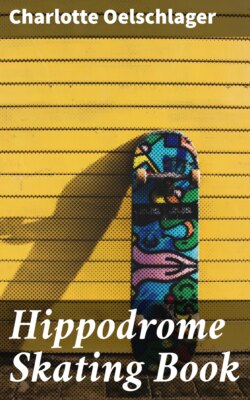Читать книгу Hippodrome Skating Book - Charlotte Oelschlager - Страница 6
На сайте Литреса книга снята с продажи.
CHAPTER 2.
Correct Form in Skating.
ОглавлениеTable of Contents
The tracing of certain set figures on the ice is by no means all there is to figure skating. The correct carriage of the head and body, the arms and the balance leg are not merely an important part of the sport; they are even the very basis on which good marks are given in all serious competitions. No skater wishes to look like a freak on the ice. To avoid it one must cultivate the right carriage and balance from the start. Certain accepted rules are in vogue among the European skaters which tend to make skating graceful. They should be memorized carefully and followed every time the skater goes on the ice.
The head should be carried erect. Momentary looking down at the ice to see where to place a figure is permitted but the habit of a drooping carriage of the head should be carefully avoided. It is as unnecessary as it is ungraceful.
The arms should not be held close to the body nor should they be flung violently about. If the former position is taken the skater looks stiff and awkward. If too wide reaching out of the arms is permitted the skater appears to be grasping at imaginary straws like a drowning man. Both extremes are bad but of the two it is better to allow the arms freedom of poise and carry them gracefully extended than stiffly hung to the sides of the body. Fencing and interpretive or folk dancing furnish interesting examples of the right use of the arms during vigorous action. The individuality of the skater is often revealed by the carriage of the arms as much as by the tracing of the figures.
Bending of the body from the hips, sidewise, is neither necessary nor permissible. It is a fault which beginners adopt from fear of falling. But the sharp edge of the skate sustains the body in its temporary violation of the law of gravitation. Take a firm edge and let the body lean as much as is necessary or desired. Some skaters take a much stronger edge than others and therefore lean more than others.
The men ought to be told that there is nothing more ungraceful or unsuitable for skating than long trousers. Knickerbockers and tight fitting coats with just a bit of military cut are the right costume for the men who would skate well and look well. The best European skaters among the men all skate in woolen tights, but they are a little theatrical and do not always serve to increase one’s admiration for the wearer.
Bending the body forward or backward from the waist is generally only temporary and for the purpose of obtaining strong impetus for an initial stroke or adding power to a stroke already started. In general the carriage of the body should be upright, with the chest expanded and the shoulders held back.
The skating leg should be bent at the knee. This bending may be increased occasionally to gain power but the straightening up of the body should almost immediately follow. Too much bending of the skating knee makes an ungraceful appearance. The balance leg should be carried somewhat away from the skating leg, with the knee well bent and the foot turned outward and downward. The knees should seldom touch in skating and should never be held close together for any considerable length of time. In some figures there are temporary and necessary violations of both of these rules.
The position and carriage of the hands have very much to do with the effect created by the skater. They should be extended gracefully, with the fingers neither stretched out nor clenched and with the palms turned down or toward the body.
CIRCLE. Right outside edge, forward. (ROF)
